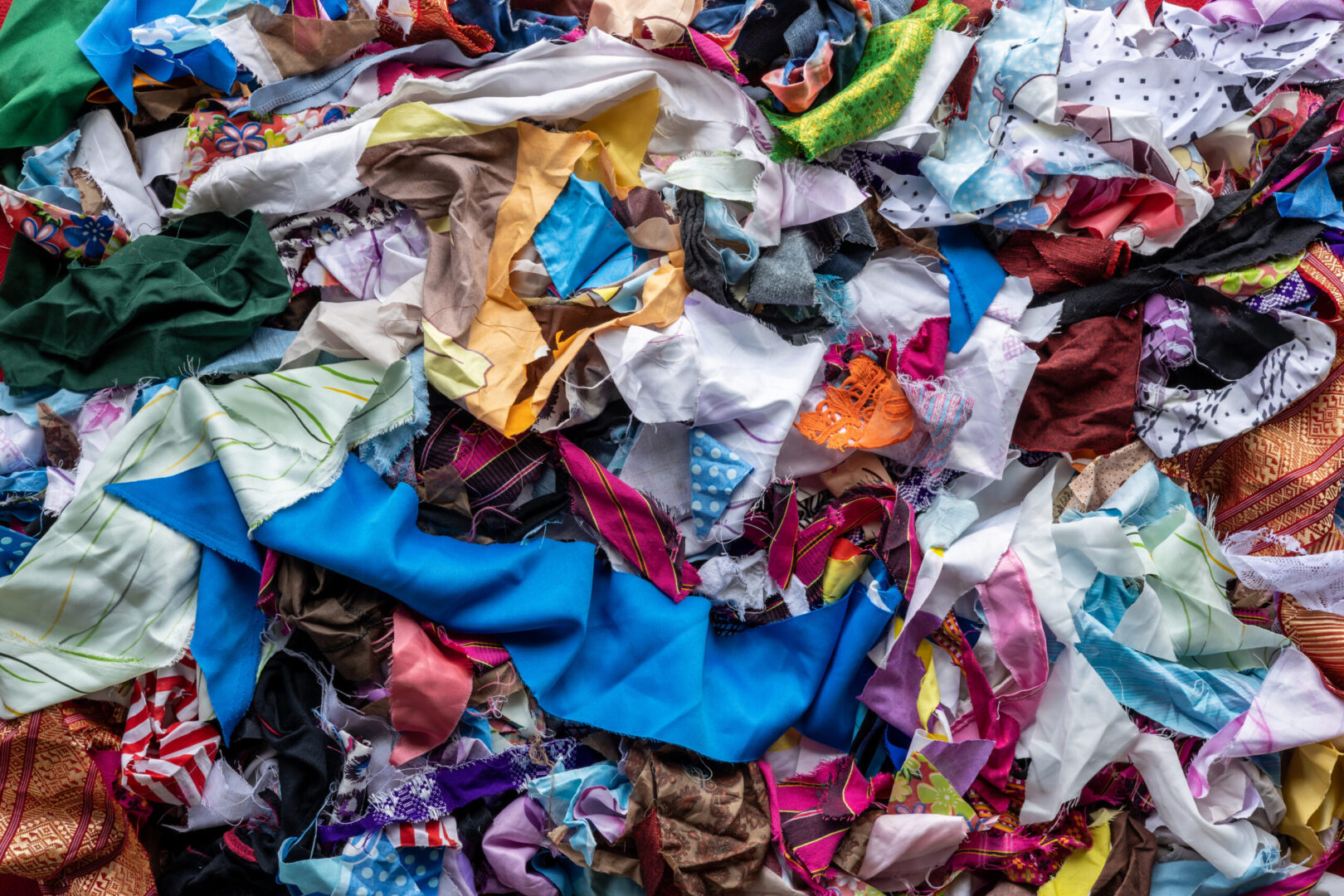Summary
- Textile waste has been carelessly discarded for many years, contaminating our environment and compromising human health and safety;
- Fortunately, there are some ways we can all contribute to changing how the disposal is made;
- Technology can boost your clothing manufacturing and ensure sustainability for your business. Want to know how? Get the free trial of Audaces360 multi-solution!

The textile industry is one of the oldest in the world. In India alone, for example, the roots of the industry date back 5,000 years. But anthropologists estimate that humans began wearing clothes between 500,000 and 100,000 years ago!
It’s not only blue skies when it comes to fashion production, though. The sector is among the five most polluting in the world, responsible for massive environmental damage.
Think of all the materials that have been improperly disposed of in just the last few years!
To ensure that textile waste is managed responsibly companies must understand the facts surrounding this issue – for the right initiatives can be life-changing.
Sumário
Read on and learn more about it!
What is textile waste?

Textile waste is any fabric or garment material that becomes unusable or is no longer wanted for use. When creating clothing and accessories, industries generate substantial textile waste. These materials have no use after production and, for this reason, are discarded.
However, due to either a lack of knowledge or negligence, companies often don’t dispose of these materials with proper treatment.
Researchers estimate that globally 92 million tonnes of textiles waste are produced every year. Studies say that Italy has the highest textile waste in the European Union (EU), with around 466 thousand tonnes of textile waste per year, and the United States Environmental Protection Agency (EPA) reports that Americans generate 16 million tons of textile waste every year.
To ensure that textile waste is disposed of correctly, fashion businesses must follow a set of environmental actions and apply them in different stages of production, such as:
- Collect;
- Storage;
- Transport;
- Treatment;
- Final allocation;
- Final disposition.
These steps aim to minimize the negative effects on the environment and public health that textile waste can cause.
Learn more: Why consider sustainable consumption and production for your company?
Textile waste in the world
Textile waste is an increasing problem worldwide.
Globally, the production of textiles is estimated to be responsible for 10% of global carbon emissions. And surveys show that it might double by the end of the decade.
Unfortunately, other statics bring concerns: the fashion industry is considered the second largest consumer of water, and processes such as dyeing and finishing contributes to the pollution of the oceans.
These facts highlight the need to recycle and reuse textile waste better. Let’s see more about it in the following!
How important is the correct disposal of textile waste?
Incorrectly disposing of textile waste can cause damage to the environment but also to your company – after all, you can lose potential customers and professionals who only work with companies that are committed to environmental responsibility.
In addition, the inappropriate disposing of materials is an environmental crime since textile waste causes pollution and harms human health, fauna, and flora.
In the United Kingdom, for example, waste criminals can receive fines of up to £50,000 and be sentenced to 6 months imprisonment per charge. Whereas, in Brazil, the crime is punishable by imprisonment from one to five years.
Implementing the ISO 14001 Environmental Management System is essential to guarantee compliance with waste disposal regulations, obtain the certification and protect your business from risks.
Failing to follow these guidelines can mean severe financial and legal repercussions for you and your company.
Learn more: How digital fashion design works and what are the benefits for the clothing industry?
How to properly dispose of textile waste?
If your company still discards waste irregularly and wants to change that, check out more ecological alternatives that can help with this change:
Recycling
Recycling is one of the best-known options for helping the environment through the fashion industry.
The simplest form of recycling today is to turn fabric into thread through defibrillation, making the material reusable as raw material.
Eco-disposal
One popular practice in the market nowadays is eco-disposal. Some companies even have specialized programs that allow the recycling of old clothes or the return of used ones to be resold, like The North Face’s Clothes the Loop and Patagonia’s Worn Wear.
Donation
The donation of pieces, fabrics, and leftovers can be of great help in combating the incorrect disposal of textile waste.
Fabrics that are no longer suitable for making can be used to create handicrafts, while discarded pieces can go to bazaars or even be donated to those in need.
In addition to disposing of what is no longer useful, it is still possible to do good for others.
Reverse Logistics
Some companies are responsible for their pieces even after they are sold: this is what we call Reverse Logistics. It’s an important part of a business’s sustainability efforts: the firms have collection points, and after people dispose of the pieces, they take responsibility for the textile waste, giving it a proper end. In the long run, this practice can help businesses reduce their waste and become more profitable.
Learn more: 4 top tips for a successful fashion collection launch
How does technology help reduce the production of textile waste?

For garment companies that want to dispose of textile waste with responsibility, technology can be a powerful ally!
As a result, Audaces offers more sustainable solutions committed to the environment. Discover some of our systems:
Save raw materials with Audaces Marker
Having good management of resources is a mandatory step for your clothing business to reach the desired profitability. And with Audaces Marker these savings materialize!
With the Audaces automated marking system, it is possible to lay any piece in just a few minutes.
Make the most of your fabrics with Audaces Supera
Audaces Supera enables the automatic creation of cutting order planning, bringing savings thanks to the algorithms that process them and keep the workstation free.
Depending on production needs, the server schedules the cutting order, assigning priorities to markers.
Want to find out how your company can save resources with intelligence and strategy? Download our free e-book and learn how to eliminate some invisible costs you might be having:
FAQ
Textile waste is any fabric or garment material that becomes unusable or is no longer wanted for use. When creating clothing and accessories, industries generate substantial textile waste. These materials have no use after production and, for this reason, are discarded.
Due to a lack of knowledge or negligence, people and companies often don’t dispose of these materials with the correct treatment. Researchers estimate that globally 92 million tons of textiles waste are produced every year, which represents a threat to the planet. The inappropriate disposal of materials is an environmental crime.
It can, and it must. Recycling is one of the best-known options for helping the environment through the fashion industry. The simplest form of recycling today is to turn fabric into thread through defibrillation, making the material reusable as raw material.






